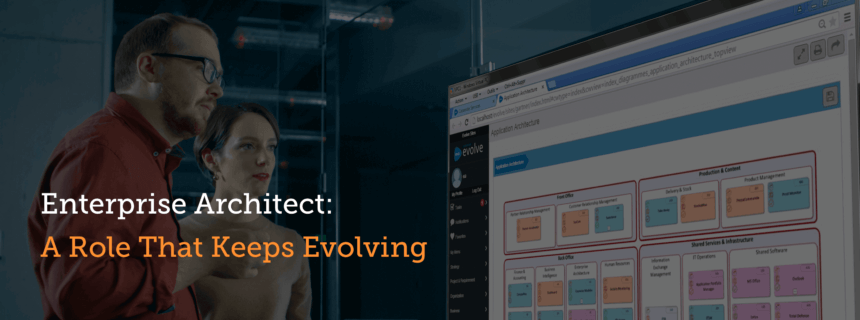Enterprise Architect: A Role That Keeps Evolving

Enterprise architect is a common job title within IT organizations at large companies, but the term lacks any standard definition. Ask someone on the business side what their organization’s enterprise architects do, and you’ll likely get a response like, “They work with IT,” which is true, but also pretty vague.
What the enterprise architects at your organization do depends in large part on how the IT department is organized. At some organizations, enterprise architects work closely with the software applications in a role that some might refer to as a solution architect.
In other organizations, the role of enterprise architect might carry more traditional IT responsibilities around systems management. Other enterprise architects, especially at large organizations, might specialize in exploring how emerging technologies can be tested and later integrated into the business.
Technology research and advisory firm Gartner predicts that enterprise architects will increasingly move into an internal consultancy function within large organizations. While this use of the role is not currently widespread, it’s easy to see how it could make sense for some businesses.
If, for example, a business sets a goal to increase its website sales by 20 percent in one year’s time, meeting that goal will require that different IT and business functions work together.
The business side might tackle changes to the marketing plan and collect data about website visitors and shoppers, but ultimately they will need to collaborate with someone on the technology side to discuss how IT can help reach that goal. And that’s where an enterprise architect in the role of an internal consultant comes into play.
Each business is going to organize its enterprise architects in a way that best serves the organization and helps achieve its goals.
That’s one of the reasons the enterprise architect role has no standard definition. Most teams consist of members with broad IT experience, but each member will often have some role-specific knowledge. One team member might specialize in security, for example, and another in applications.
Like the tech industry in general, the only constant in enterprise architecture is change. Roles and titles will continue to evolve, and as the business and IT sides of the organization continue to come together in the face of digital transformation, how these teams are organized, where they report, and the types of projects they focus on are sure to change over time.
Enterprise integration architect is one role in enterprise architecture that’s on the rise. These architects specialize in integrating the various cloud and on-premise systems that are now common in the hybrid/multi-cloud infrastructures powering the modern enterprise.
For the Enterprise Architect, Business Experience Becomes a Valuable Commodity
Regardless of the specific title, enterprise architects need the ability to work with both their business and IT colleagues to help improve business outcomes. As enterprise architecture roles move closer to the business, those with business knowledge are becoming valuable assets. This is especially true for industry-specific business knowledge.
As industry and government compliance regulations, for example, become part of the business fabric in industries like financial services, healthcare and pharmaceuticals, many enterprise architects are developing specializations in these industries that demonstrate their understanding of the business and IT sides of these regulations.
This is important because compliance permeates every area of many of these organizations, from the enterprise architecture to the business processes, and today it’s all enabled by software. Compliance is another area where Gartner’s internal consultancy model for enterprise architects could benefit a number of organizations. The stakes are simply too high to do anything but guarantee all of your processes are compliant.
Enterprise architect is just one role in the modern organization that increasingly stands with one foot on the business side and the other in IT. As your organization navigates its digital transformation, it’s important to use tools that can do the same.
erwin, Inc.’s industry-leading tools for enterprise architecture and business process modeling use a common repository and role-based views, so business users, IT users and those who straddle the line have the visibility they need. When everyone uses the same tools and the same data, they can speak the same language, collaborate more effectively, and produce better business outcomes. That’s something the whole team can support, regardless of job title.
